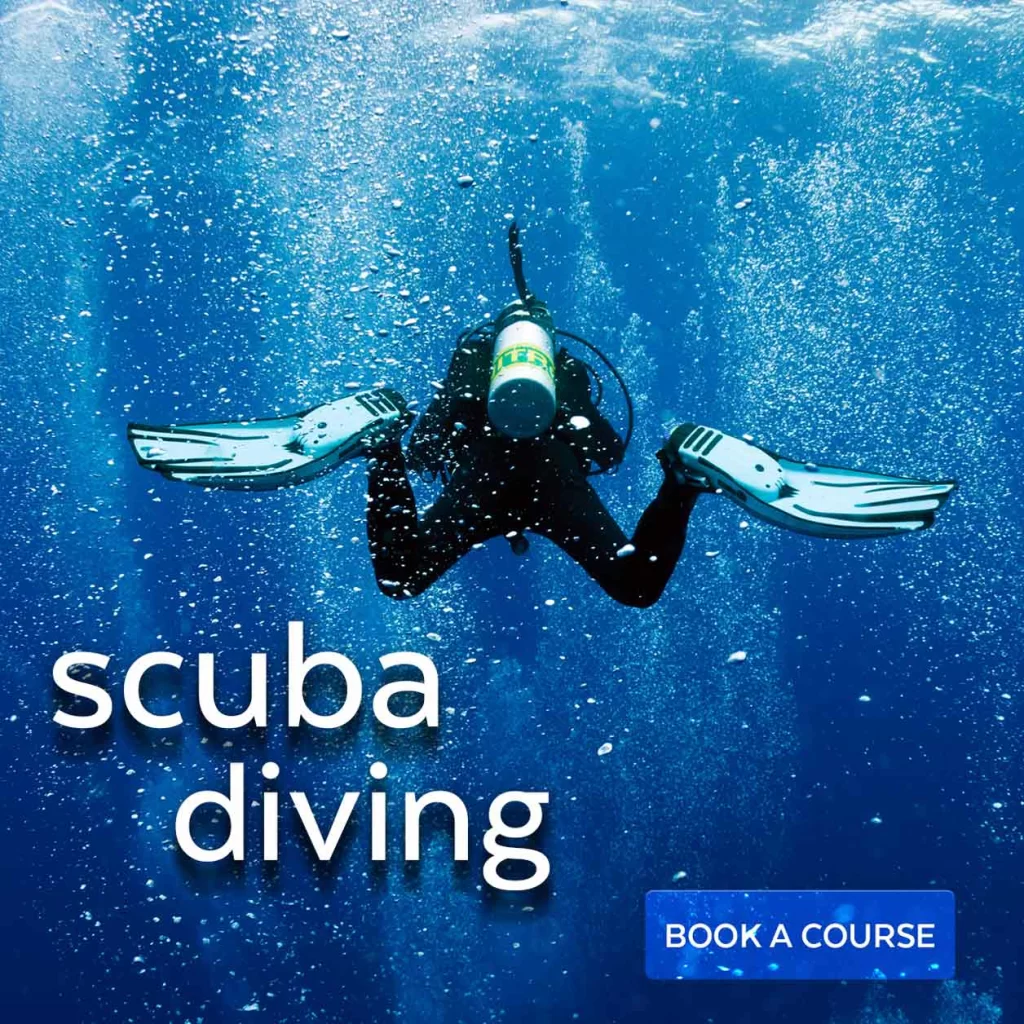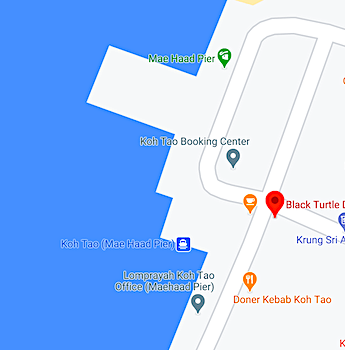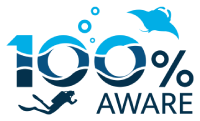Ecological Monitoring Program in Thailand
Conservation Diver EMP Marine Conservation course

Scuba diving in the Gulf of Thailand is a very popular activity and offers many world-class diving locations boasting warm, tropical clear waters and an abundance of marine life, making it an ideal location for scuba diving.
As scuba divers we have an additional responsibility and a duty to protect, preserve and conserve our oceans and all the marine life that reside there.
Scuba Divers should always follow best practices to minimize their impact on the marine environment and protect the marine life they encounter.
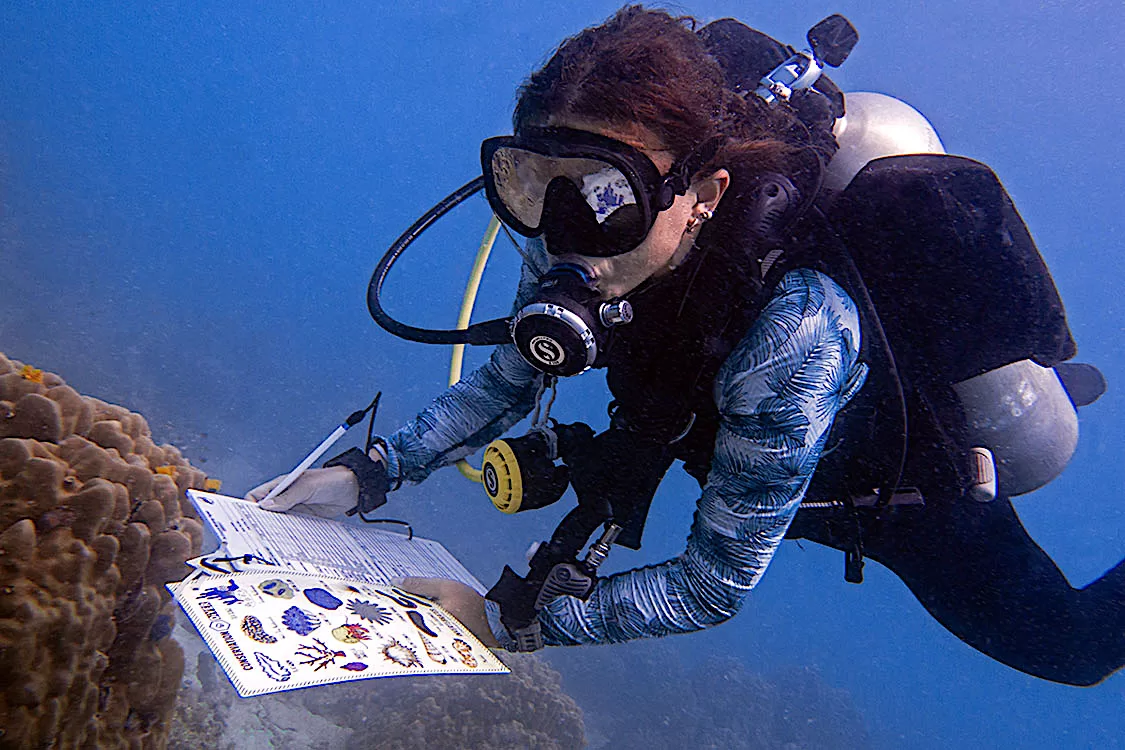
Marine Ecosystems
Furthermore, customers should choose responsible dive operators who are actively committed to protection of the marine environment, and who deliver on their promise, through their educational marine conservation and diver training programs.
Our Ecological Monitoring Program is a fundamental and cornerstone course in our marine conservation course curriculum and the knowledge, awareness and practical skills you gain on the course, will ensure you become a knowledgeable and competent scientific diver.
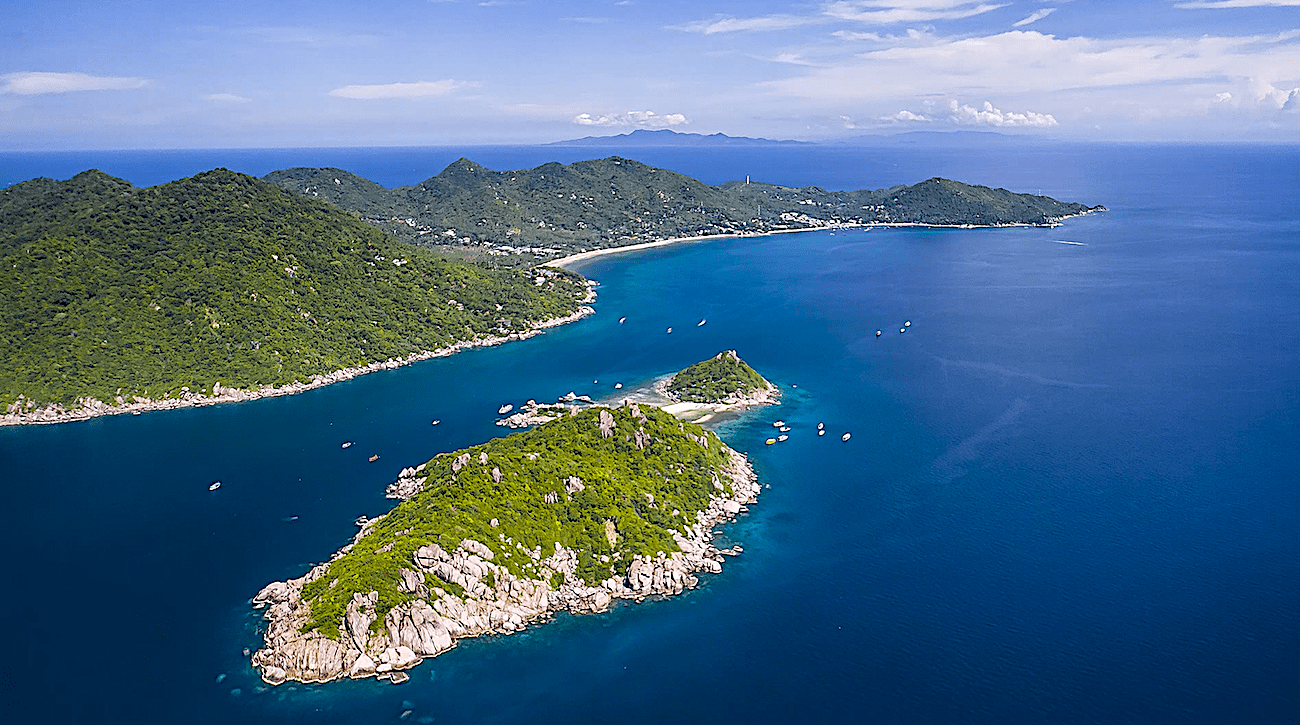
Diver Training Courses on Koh Tao
As a 100% AWARE, PADI 5 Star Career Development Center, we provide our customers with the full range of PADI diver training courses, allowing us to fine tune diver skills from entry level Discover Scuba Diving experiences, to Open Water & Advanced Open Water courses – this is before students start any of our Marine Conservation courses.
If students are already certified recreational divers, it is important we review buoyancy skills before the EMP course starts, to ensure all of the scientific dives are carried out without any impact on the local Coral Reefs.
Our Pro level training candidates can benefit from our Eco Introduction as part of their extended Scuba Diving Internships. Options are available for our Divemaster & Instructor candidates, who want to differentiate themselves and explore the many marine conservation training courses available to them.
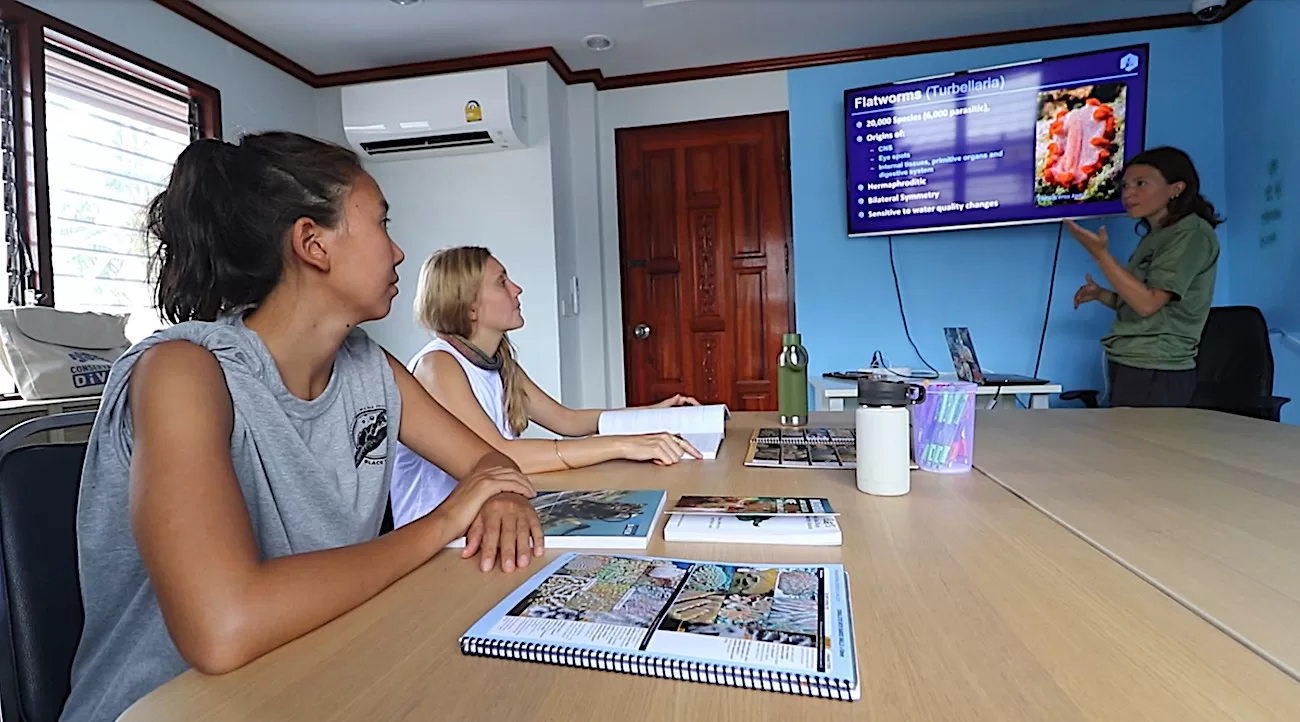
Introduction to the Ecological Monitoring Program
Our EMP course typically covers topics such as marine ecology, coral reef conservation, and methods for monitoring and assessing marine ecosystems.
Students learn about the importance of maintaining healthy marine ecosystems, the threats facing these ecosystems, and how to implement conservation strategies to protect them.
Our Ecological Monitoring Program is a course that includes practical training in scientific monitoring techniques, such as underwater surveys and data analysis.
EMP Marine Conservation course in Thailand
If you are passionate about marine life and the unique coral reef marine ecosystem, then the Conservation Diver Ecological Monitoring Program will help deepen your understanding and appreciation of these topics.
Enrolling on this course will help you develop a better understanding of the challenging future coral reefs are facing.
Ecological Monitoring Program introduces students to coral reef ecology and teaches you how to view the reef from a scientific perspective, assessing key biotic and abiotic reef components.
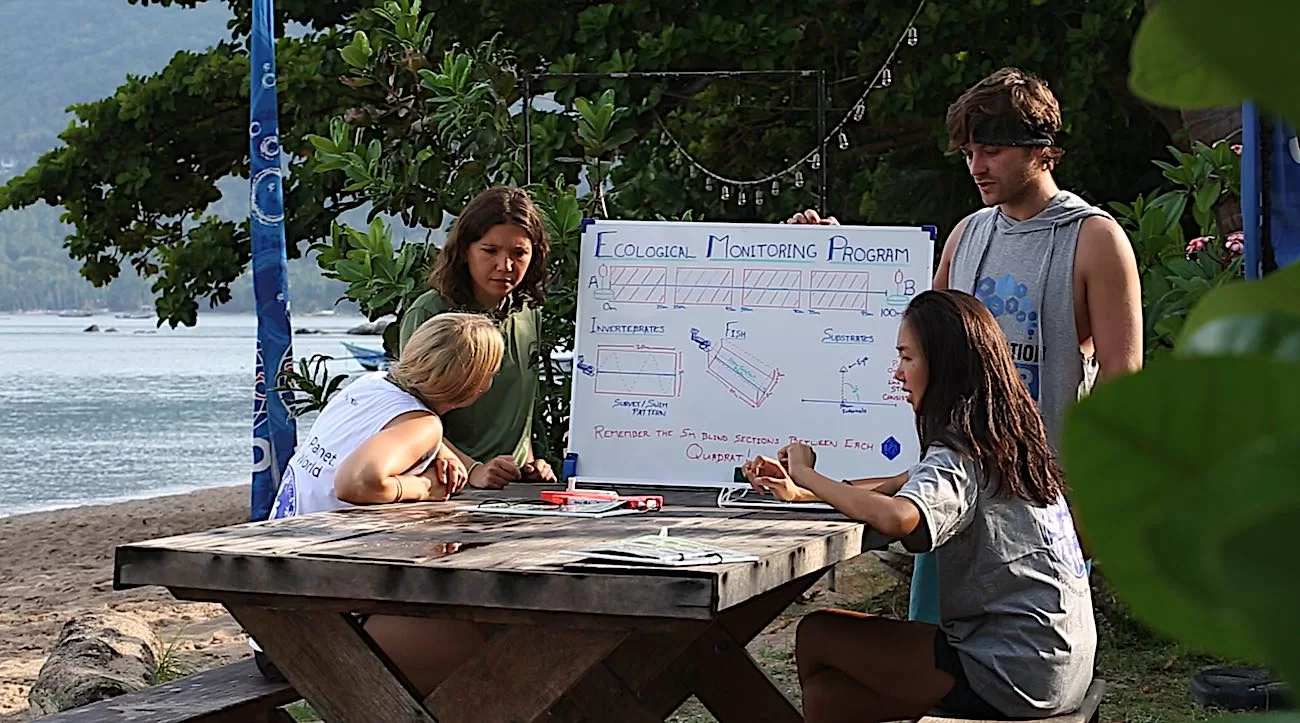
Improve Scientific Understanding of Coral Reef Ecology
You will learn how to use scientific sampling and reef survey techniques and upon successful completion you will be certified to conduct your own reef surveys and upload your data onto the online database.
There are various criteria that you will assess including fish & Invertebrate abundance, biodiversity, substrate cover, coral identification & taxonomy, coral disease and coral bleaching.
The Ecological Monitoring Program is at the center of the Conservation Diver training, education and research program, and as such this course is a prerequisite for many of the other courses offered by Conservation Diver.
The EMP course provides divers with hands on experience that can be applied to future academic or professional pursuits.
Completing this course is a rewarding and enriching experience for everyone, regardless of whether you are pursuing a career in this field or simply have a personal interest in marine life and the oceans.
Those who master the skills & knowledge on the EMP course are encouraged to go on to achieve the Advanced Ecological Program certification.
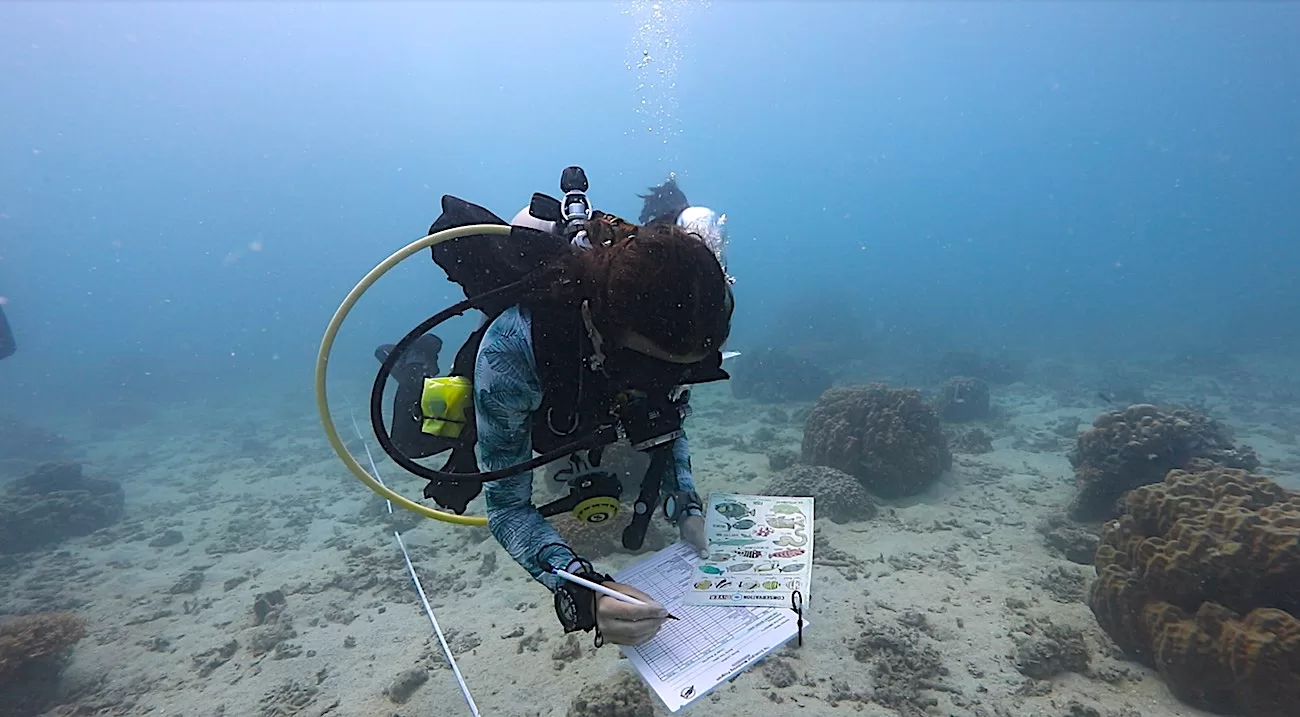
Enhance Professional Development as a Coral Reef Researcher
The Advanced Ecological Monitoring Program certification is awarded to students who show exceptional research skills. An individual must already be an EMP diver and have completed Conservation Diver Specialty training courses in Coral Taxonomy & Identification, Coral Disease & Compromised Health and 3 other monitoring courses, such as the Sea Turtle Ecology & Monitoring course.
Reef researchers and students all around the world use similar programs to collect data, which means the Advanced Ecological Monitoring Program will help with your professional efforts too.
By increasing awareness and involvement, we can decrease our impacts on coral reefs and provide solutions to protecting and restoring the reefs around the globe and help to make a difference.
Coral Restoration Projects
Most successful restoration projects have been achieved by small groups and local communities, rather than governments or policy makers and Black Turtle Dive is continuing this tradition, doing as much as we can to protect the local environment here on Koh Tao.
After completing this course, students will know how to perform the reef research methods of the Ecological Monitoring Program and can continue to help with data collection.
You will gain knowledge about coral reefs and their inhabitants. Students will learn to identify indicator species fish, invertebrate species and substrate types, gain experience working with equipment underwater and also practice buoyancy and navigation skills.
Once you have successfully completed the training you can assist on our monthly EMP’s, as well as participate in EMP’s in other areas of the world through our network of Conservation Diver Centers.
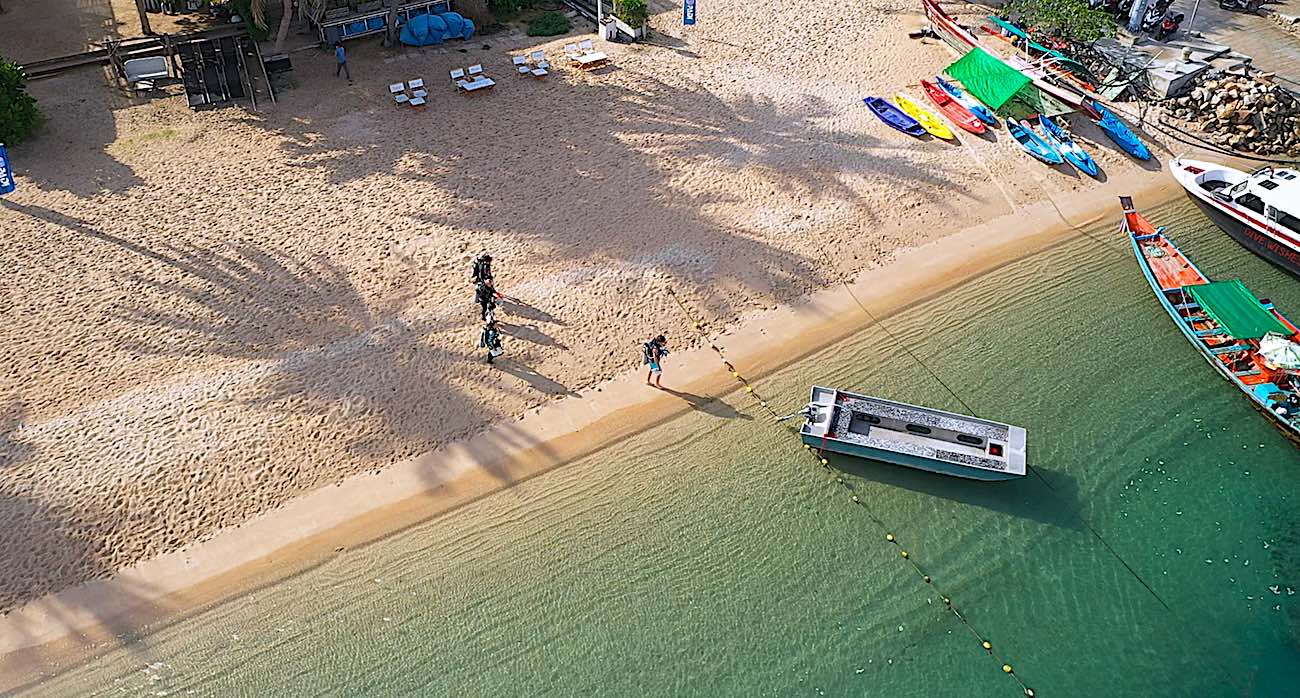
- 4-day program
- 4 training dives during the course
- Ecological Monitoring Program eLearning
- Rental of all scuba equipment
- FREE use of Dive Computer
- Log book
- Black Turtle Dive Customer (and environmental) promise and pledge.
Enrolment on Conservation Diver Ecological Monitoring Program
- 12 years of age or older
- A certified Advanced Open Water Diver
- Demonstrate diving ability and be proficient with buoyancy and self-awareness during a buoyancy assessment conducted prior to any EMP course specific in water training
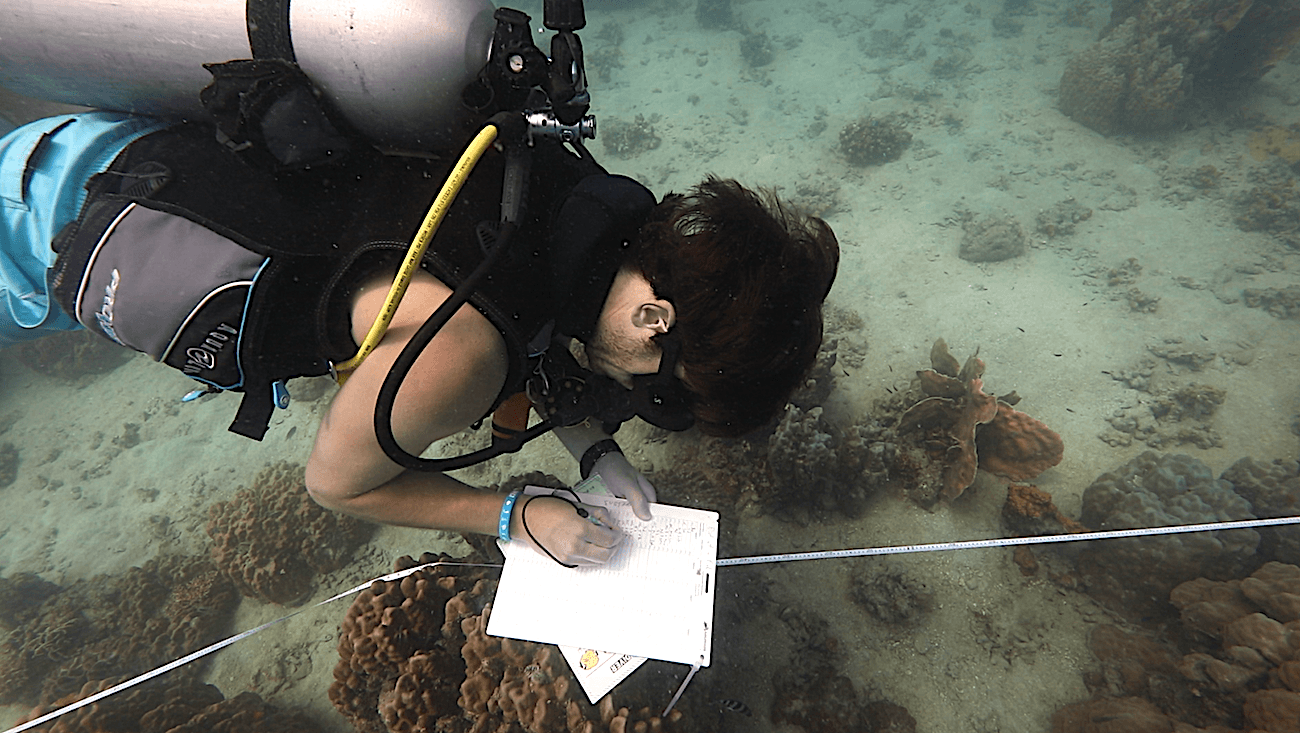
What you learn on the Ecological Monitoring Program
- You will understand more about coral reef ecology and the threats facing coral reefs
- The various survey techniques used by reef managers to monitor coral reef ecosystems
- Techniques and diagnostic features for identifying coral reef invertebrates along a permanent transect line
- Techniques and diagnostic features for identifying coral reef fishes and other vertebrates along a permanent transect line
- How to assess substrate types and hard coral coverage and growth forms using the point-intercept technique
- How to assess coral health and bleaching
- Perform invertebrate, fish & substrate surveys and input the data into the database
- Complete all 3 course exams
Knowledge Development Learning
The knowledge development section of the Ecological Monitoring Program course is divided between independent study (E-learning) and a series of in class knowledge development presentations and workshops, led by one of our Conservation Diver Instructors.
The e-learning section covers seven sections and the following subjects:
Outline of the Ecological Monitoring Program
- What the course covers
- What certifications you receive after completing this course
- Safety notes
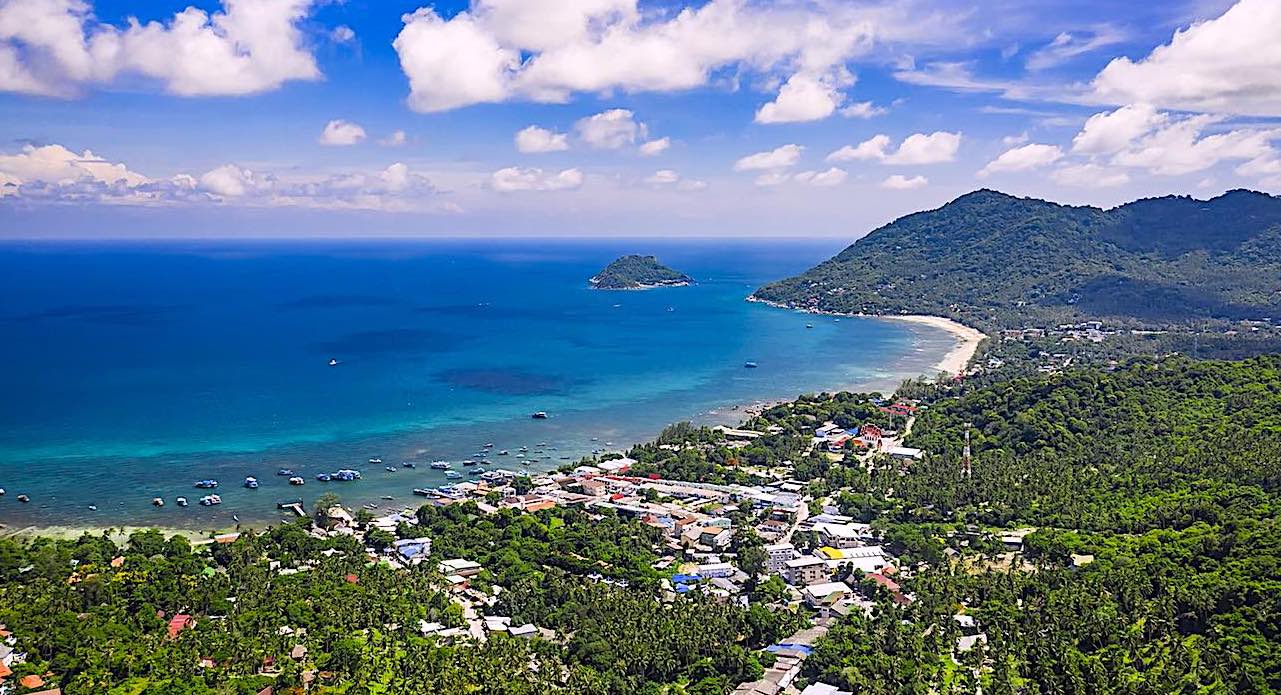
An Introduction to Coral Reefs
- The Value of Coral Reefs
- Symbiosis among reef organisms
- Coral Anatomy
- Requirements for a healthy reef
- Threats to Coral Reef Health
- A note about divers
Collecting data along a transect line
- Using Indicator Species
- Intro to transect lines
- Laying out a transect line
- Recording data along a transect line
- Swimming along the transect line
- Conducting the invertebrate survey
- Conducting the fish survey
- Conducting the substrate survey
- Estimating visibility using a Secchi disc
Invertebrate Indicator Species
- Introduction to Invertebrates
- The simplest of marine animals
- Platyhelminthes; The Flatworms
- The Mollusk Phylum
- Annelids; The segmented worms
- The Arthropod Phylum
- The Echinoderms Phylum
- Invertebrate indicator species list
Fish Indicator Species
- Introduction to Marine Invertebrates
- The Elasmobranchs – Sharks & Rays
- The bony fish
- Marine reptiles
- Marine mammals
- The Fish Indicator Species guide
Substrate Survey
- Introduction to the substrate survey
- Non- Living substrates
- Living substrates
- The Hard Coral growth forms
- Hard Coral Health slates
- Substrate code review
We recommend that you complete all independent eLearning before you start the EMP Marine Conservation course.
However, if you are signing up late, or have been unable to complete this section prior, we will give you a homework schedule that assures you complete prerequisite study for subsequent presentations and workshops that we will be doing throughout the course.
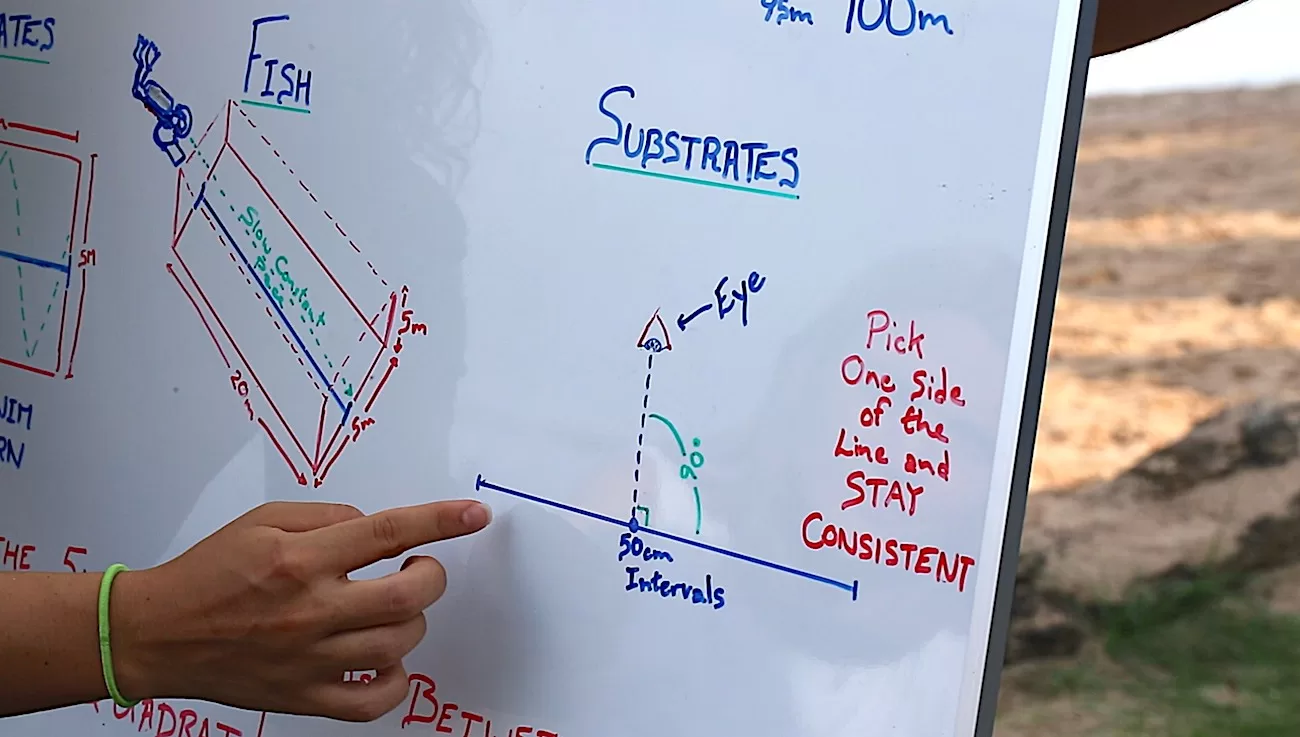
Knowledge Development Presentations & Classroom Workshops
- Orientation
- Introduction to Marine Ecology
- Marine Invertebrates
- Marine Fishes
- Coral Reef Substrate type
- 3 x 20 question exams
Water Skills Development & In-Water Workshops
- Buoyancy assessment
- Transect Line deployment
- Conduct an Invertebrate survey
- Conduct a Fish survey
- Conduct a substrate survey
- Conduct a full EMP survey dive
Successful Completion of Ecological Monitoring Program
- Complete all e-Learning modules
- Attend all 4 Instructor led knowledge development presentations
- Locate the transect line starting point
- Effectively lay out the transect line without contacting the reef
- Conduct all three surveys (invertebrate, fish and substrate) at least once
- Perform a ‘full EMP survey’ at least once
- Collect all equipment
- Enter data onto data sheets or into the online database
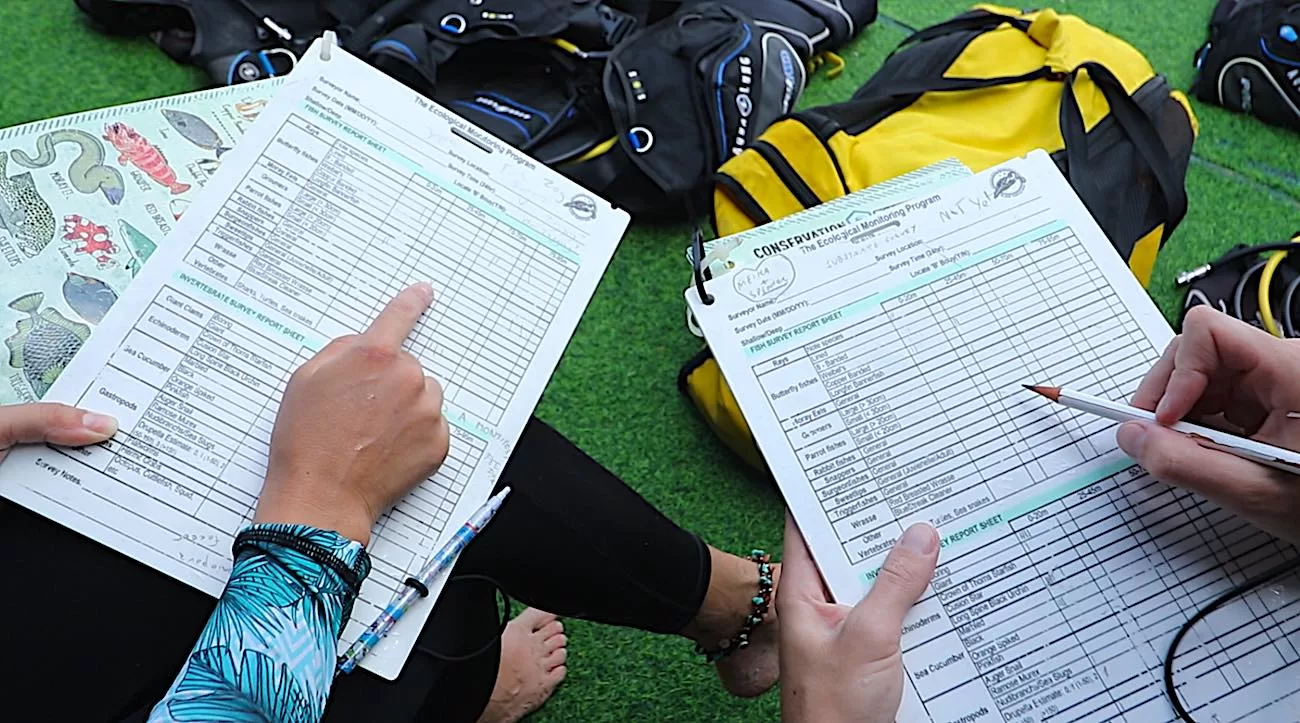
Ecological Monitoring Program Course: 11,900 baht
Black Turtle Dive takes its customer promise very seriously and we wish to pass on our passion to provide our customers with the highest quality of safety, training and service.
The Marine Conservation program at Black Turtle Dive was launched in 2022, having evolved out of Eco Koh Tao, one of the longest running environmental organisations on the island.
Eco Koh Tao was founded by Nathan Cook, a master of Marine Science from Southern Cross University, Australia and Matt Bolton, a PADI Course Director who first brought Reef Check to the island in 2007 and founded Black Turtle Dive.
Artificial Dive Sites
Eco Koh Tao planned and developed Junkyard Reef, Koh Tao’s first and arguably most successful artificial dive sites. This work started in 2006 and continues to this day and Junkyard Reef hosts thousands of open water training dives every year, taking pressure off existing natural dive sites around Koh Tao.
Eco Koh Tao has also worked hard over the years monitoring reef health and being involved in multiple restoration projects. This work included being an integral part of the Save Koh Tao organization that spearheaded Buoyancy World, an island wide initiative to develop a second artificial reef in 2009.
Black Turtle Conservation symbolises the unification of Koh Tao’s two original ocean researchers, Nathan and Chad Scott. Chad founded Conservation Diver on Koh Tao in 2014, following 6 years of development work at his NHRCP program.
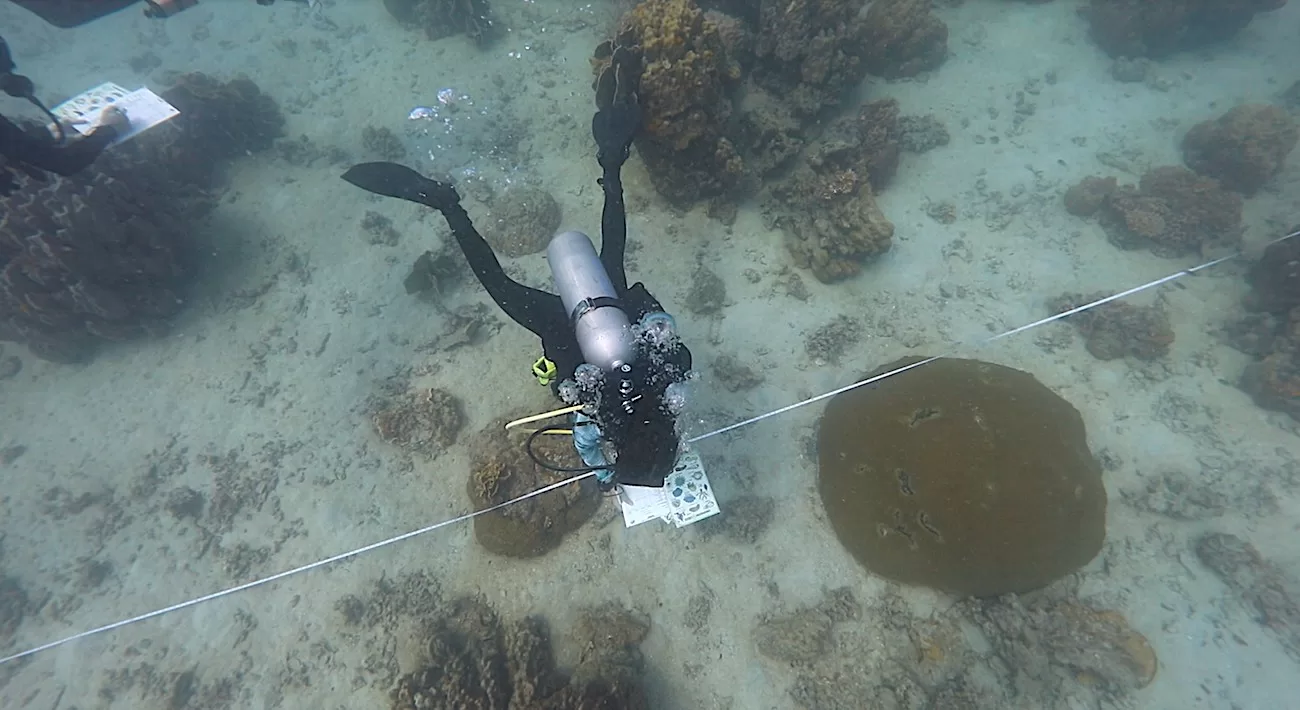
Conservation Diver Marine Conservation Leaders
Conservation Diver is now a world leader in marine conservation education and has certified thousands of ocean enthusiasts over the past decade.
Eco Koh Tao and NHRCP worked towards mutual goals for many years, but it is with this program at Black Turtle Dive that finally their deep local knowledge and global conservation vision has been combined to form what we believe is the best Reef Ecology And Conservation Training program (REACT).
The Conservation Diver global network extends across 11 locations, with 50+ instructors, teaching over 35 different marine science courses, bound together in the mission to train the next generation of marine conservationists.
Marine Conservationists
Black Turtle Conservation is proud to be part of this shared vision. By working together in this way, we are able to benefit from data collaboration and the vast knowledge shared between large groups of experts from various disciplines.
No other network in the world exists that connects conservation programs in such a way, which gives our students the benefit of being part of a movement of research and conservation much bigger than one single program of work.
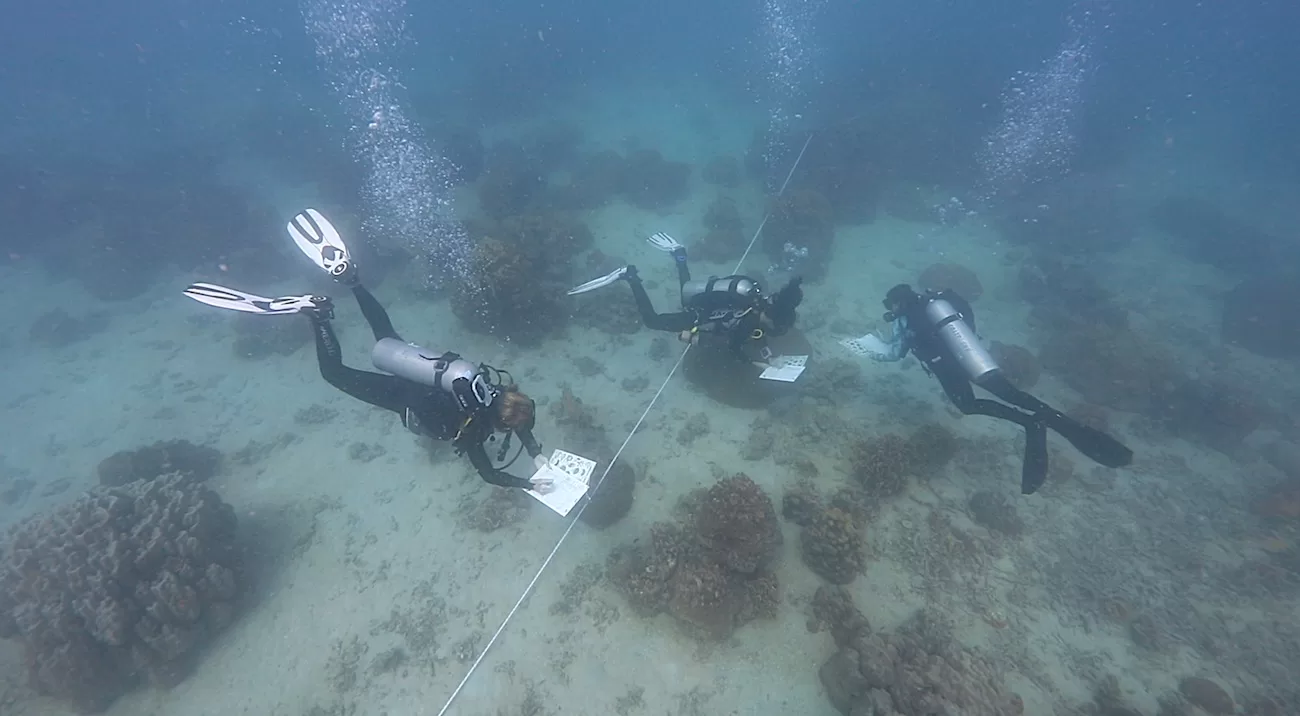
Koh Tao Ecological Monitoring Program Schedule
The Ecological Monitoring program is scheduled over 4 days
Day 1
- Orientation
- Marine Ecology presentation
- Invertebrate presentation
- LUNCH
- Buoyancy check
- Locating starting point of transect line
- Laying a transect line
- Conducting an Invertebrates survey
Day 2
- Fish presentation
- LUNCH
- Conducting a Fish survey
Day 3
- Substrate presentation
- LUNCH
- Conducting a substrate survey
Day 4
- EMP Assessment survey
- Final Exam
- Final counselling and feedback session
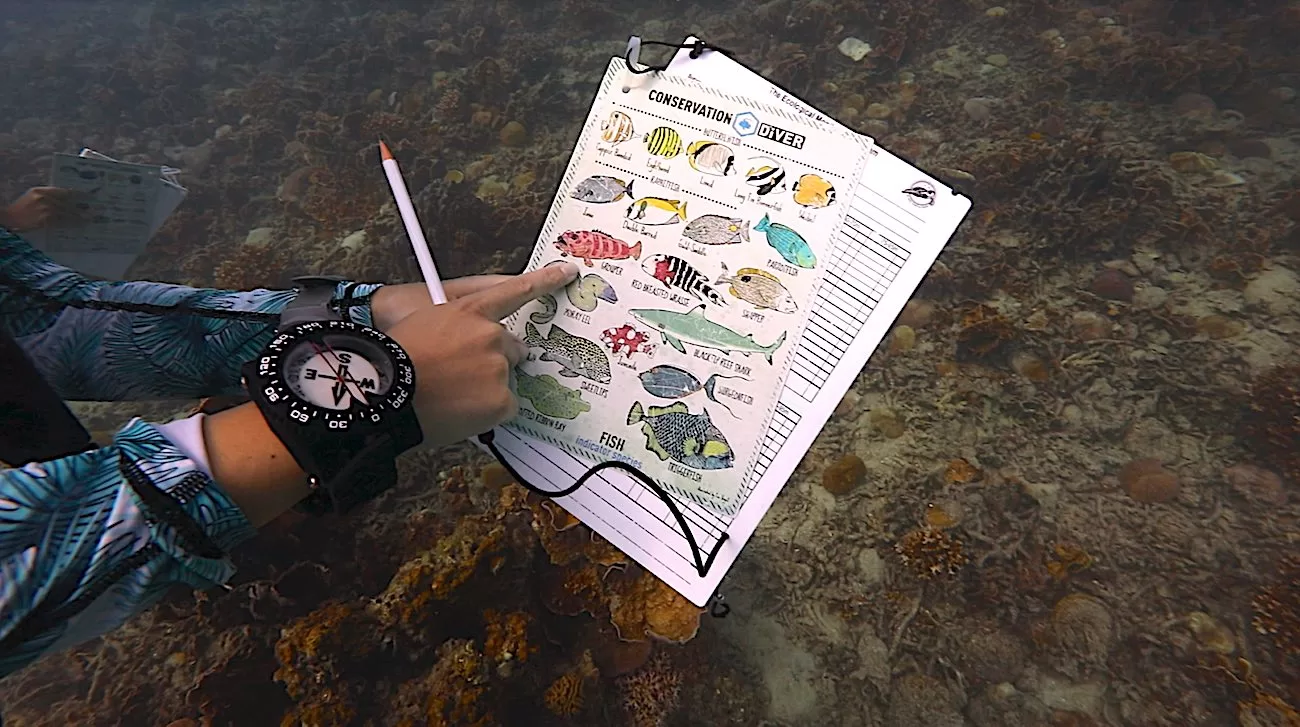
Ecological Monitoring Program Course Information
The following section provides students with more in-depth detail about the Koh Tao Ecological Monitoring program.
Orientation & Knowledge Development
As soon as you sign up, we will send your Ecological Monitoring Program course e-learning manual.
Once you have redeemed your access code you can start working your way through the e-learning sections, as we recommend you complete this prior to Day 1 of the course.
You will start the EMP with your course Orientation.
This includes completing all required paperwork; Release of Liability/Assumption of Risk/ Non-agency Disclosure & Acknowledgment Form, Student survey, Student Responsibilities agreement, Scientific Diving Acknowledgment Agreement, Standard Safe Diving Practices Statement of Understanding and Medical Statement (RSTC Medical form).
EMP Course & Schedule
As you can see from the schedule above, the Ecological Monitoring Program e-learning knowledge development comprises of 6 modules.
Each module has a corresponding e-learning section and ideally this will be completed before the Instructor led presentation.
Instructor led knowledge development sessions are integrated into the schedule to precede the corresponding ‘in water’ skill development and survey training dives.
Additional dive and theory reviews and feedback are scheduled outside of the schedule, as and when required with each individual candidate.
You will be given the exams after you have successfully completed the corresponding classroom presentation and survey dive.
Don’t worry. By this time, you will be able to do all this in your sleep.
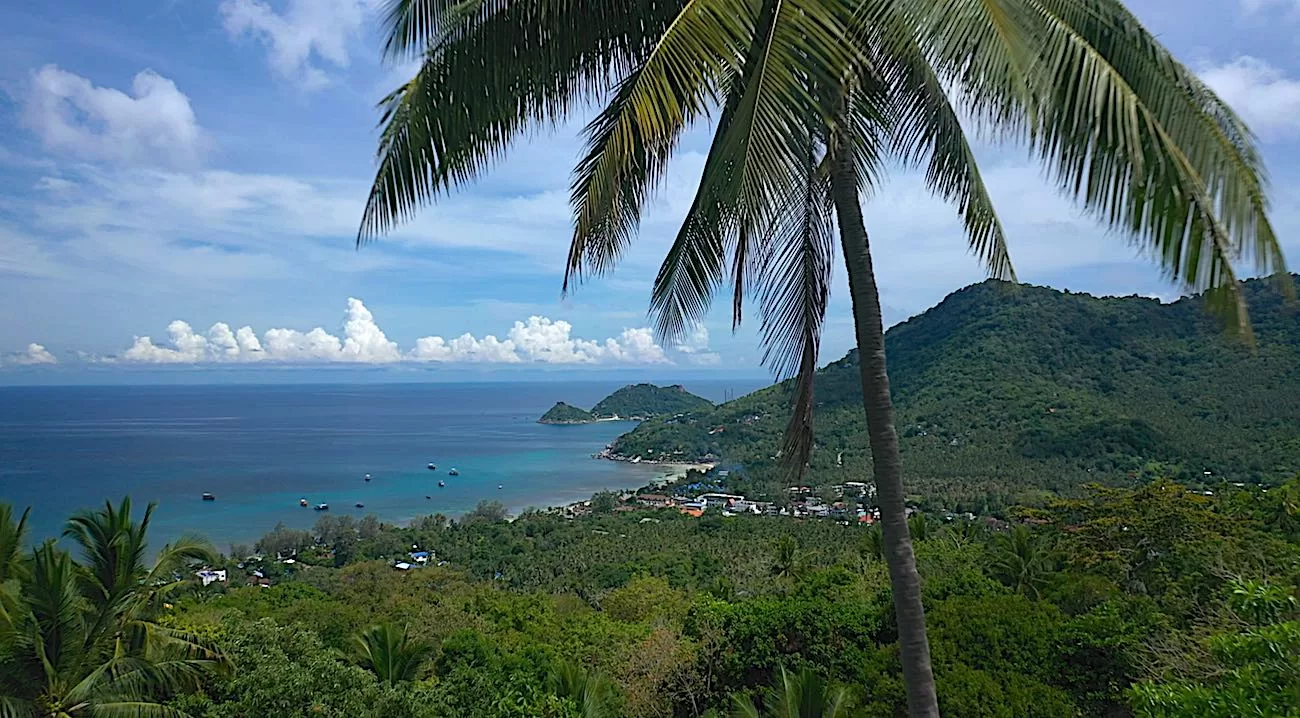
Water Skill Development Workshops
Buoyancy Assessment for Scientific Diving
Prior to all Conservation Diver training courses candidates must satisfactorily complete a buoyancy assessment with a Conservation Diver Instructor.
This includes being able to swim slowly with legs elevated to avoid damaging the reef, and with your head in the down position.
You must be able to record data on an underwater slate whilst keeping an eye on the reef, maintaining buoyancy and not touching the reef either with any part of your body or equipment.
You should also be able to maneuver easily in a manner that avoids any disturbance of the reef
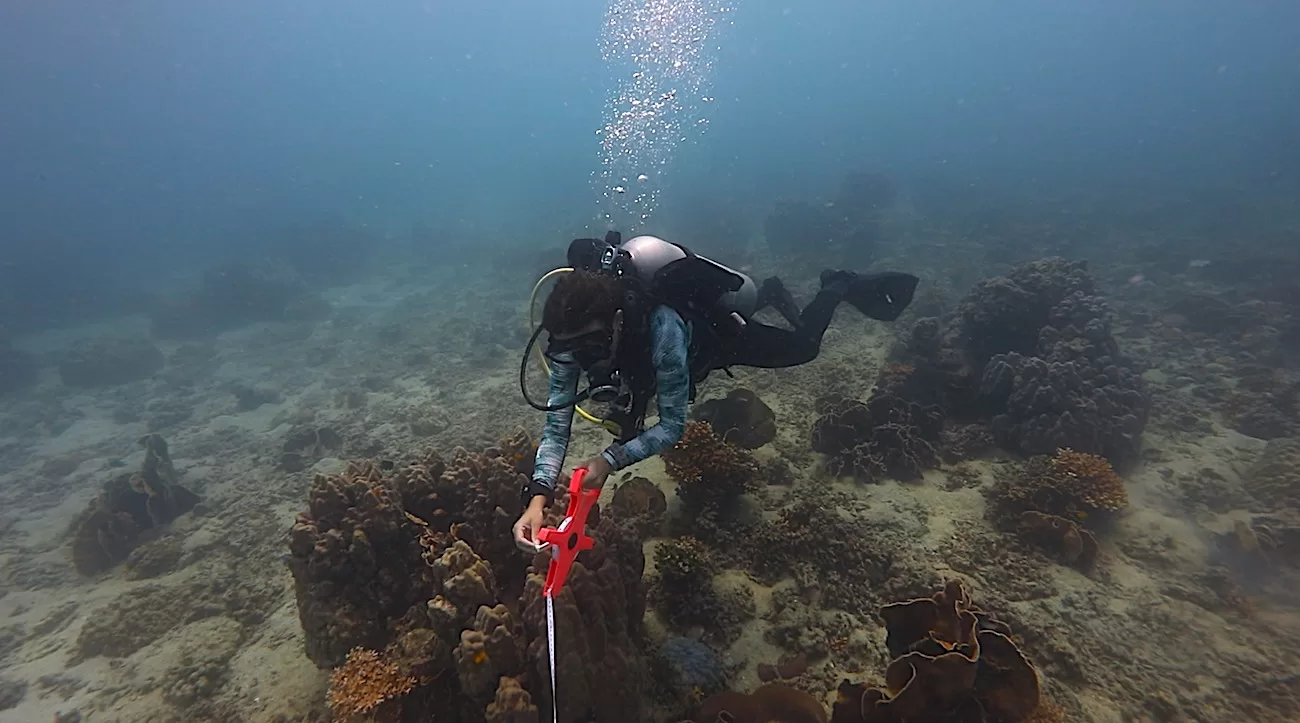
Laying out a transect line
For the Koh Tao Ecological Monitoring Program, the areas we monitor generally have two lines, a shallow line, and a deep line. This allows us to sample from two areas of the reefs and assess how changes occur over different depths or reef types.
At each line there is a starting marker and an ending marker (called ‘A’ and ‘B’, respectively) that the transect line will run between.
After locating the starting point, the transect line is attached to the marker and each person in the buddy team takes on a different role. The first person becomes the navigator, and the second becomes the line manager.
Underwater Navigator
The navigator is responsible for following a set bearing on the compass to get from point ‘A’ to point ‘B.’ It is an important job that requires much precision.
The line manager follows directly behind the navigator, lays the line, and manages the measuring reel.
Your instructor will go over some of the more technical requirements with you before the dive such as the distance you need to be in relationship to the reef.
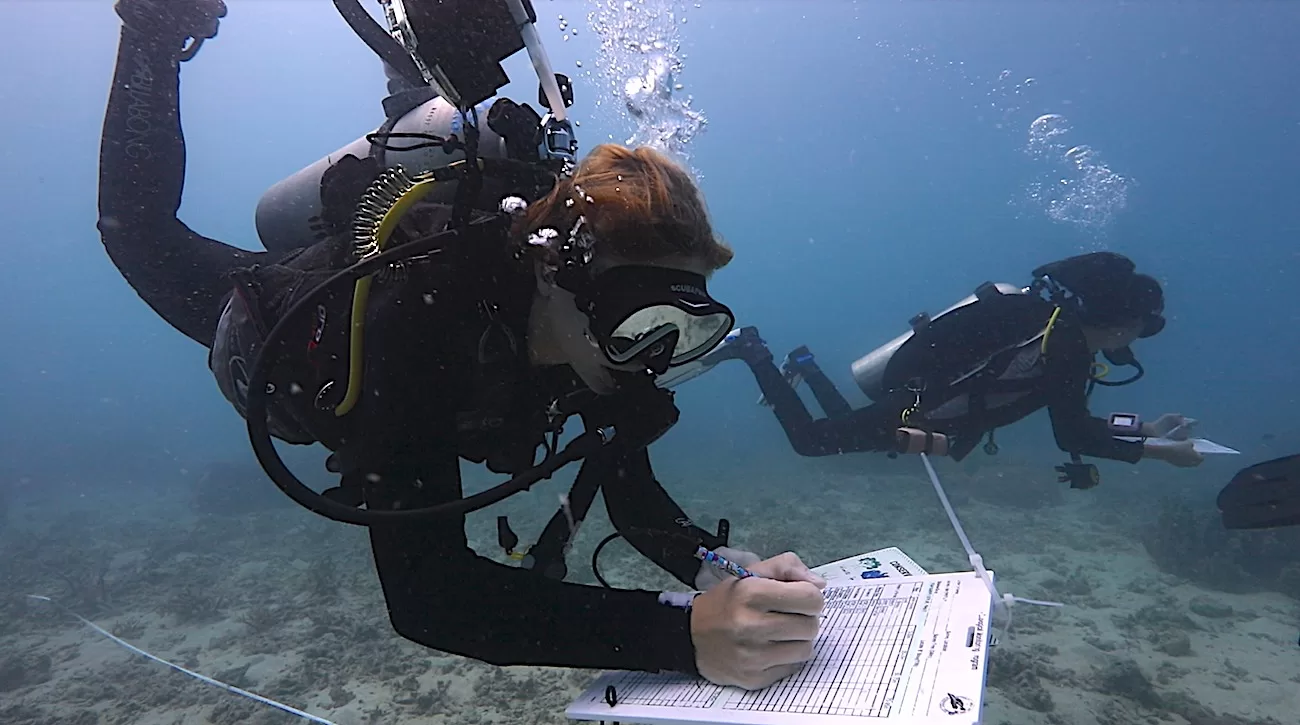
Invertebrate Survey
Most invertebrates tend to be towards the bottom of the food chain such as shrimps & crabs but some invertebrates are considered ‘top-predators’. This group includes Crown of Thorns Starfish & the Trumpet Triton Snail.
Herbivorous invertebrates such as the Sea Urchins and Sea Cucumbers are important regulators of algae and nutrient cycling on the reef so observing these species in numbers is usually a sign of a healthy reef.
Most Invertebrates are slow moving, or sessile (non-moving). This makes counting and recording them relatively easy once you are able to identify them.
Almost all of the invertebrate indicator species are benthic, meaning that they live on the bottom, and most are non-swimmers.
Invertebrate Indicator Species
However, there are many Invertebrates that are cryptic. This means that they stay hidden during the day time. When counting Invertebrates, you have to take your time to look over the whole survey area, which includes looking on top, under, and inside holes in corals.
Invertebrate identification is generally the easiest of the three surveys for new EMP students to complete and why our Conservation Instructor will have you complete this survey first. It also takes the most time of the three surveys and especially so in areas with dense coral reef cover.
Moving through the individual sections of the line, you will zigzag back and forth across the transect line, looking no more than 2.5 meters out on either side of the line when completing the invertebrate survey.
You will assess all invertebrates that are in a 20 meter long by 5-meter width area visualized around the transect line, in 4 x 20m sections down the whole line.
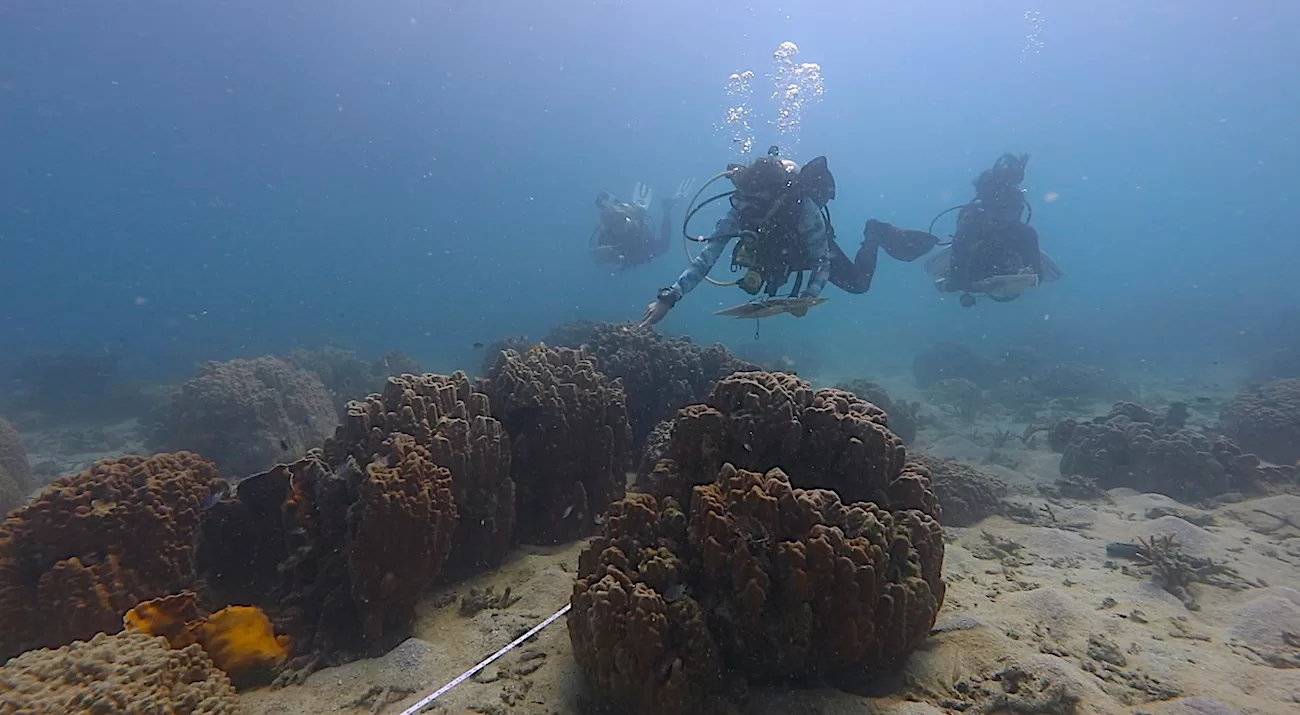
Important Tips to Conduct an Invertebrate Survey
- Look around each coral or rock, checking as thoroughly as you can – without disturbing the substrate or contacting the reef. We Never move any natural objects to look for indicator species.
- Stay within the 5 x 20 m survey zone.
- Continue moving forward as you zigzag back and forth across the line.
- Be sure not to count any animals twice.
- Ask your instructor or take a picture of any animals you are unsure about.
- Quickly check over your slate at the end of each section to be sure nothing was forgotten.
- Be sure to stop collecting data at the end of the section, and swim 5 meters before beginning again in a new column on your slate.
- Wait for your buddy at the end of each section, and check each others air levels before proceeding to the next section.
- After you have finished all 4 sections and reached the end of the line, wait for your buddy and any other surveys and then reel the line in.
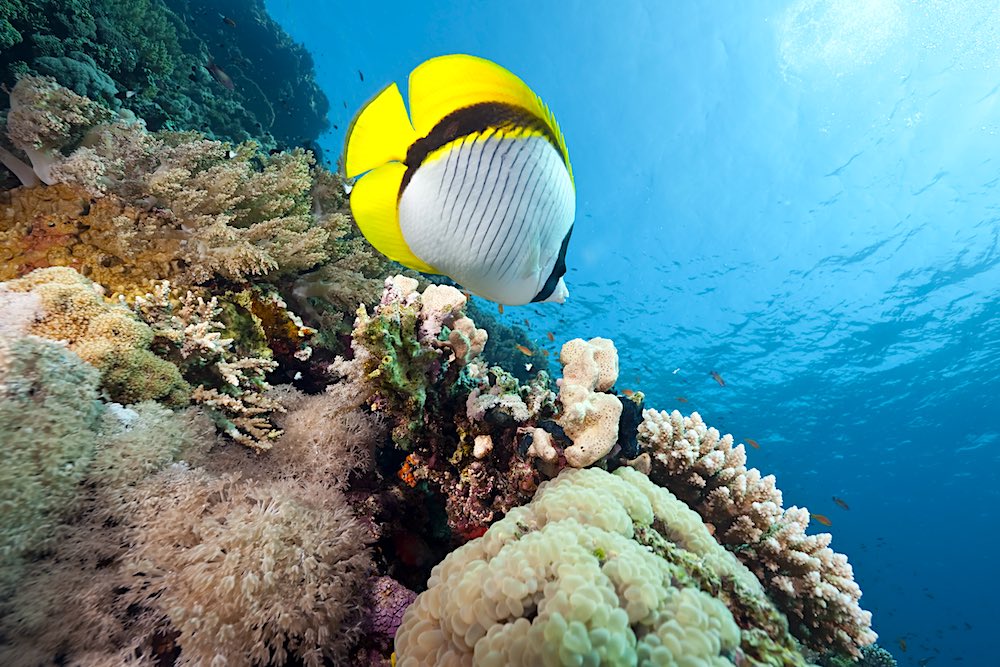
Fish Survey
For the purpose of the EMP, our ‘Fish’ survey includes all vertebrates (animals with a back bone). During this survey you will also be looking out for Sea Turtles, Rays & Moray Eels.
Vertebrates tend to be higher on the food chain, more variable day to day, and faster moving. This makes counting the fish much harder, unlike invertebrates, they move around and will swim away from you.
You will conduct the fish survey after you have practiced collecting data along a transect line using the Invertebrate survey method.
Fish and other vertebrates can be either demersal (living near the bottom) or pelagic (living in the water column), so we will also have to look ahead, down below, and up above for the indicator species fish.
Fish Indicator Species
This means our survey area will be more like a tunnel than a belt; 5 meters wide, 5 meters high, with 4 x 20 meter sections along a 100 meter line, each with a 5 meter space between each 20 meter section.
We also have to add a time component to the fish survey, because counts will be very different depending on whether it takes a diver 5 minutes or 20 minutes to swim through the section.
To do this, the diver should go as slow as possible, without stopping. Doing so will also help to slow down your breathing and movement so the fish will be less frightened by your presence.
Your instructor will demonstrate the proper pace during your first Fish Survey Dive.
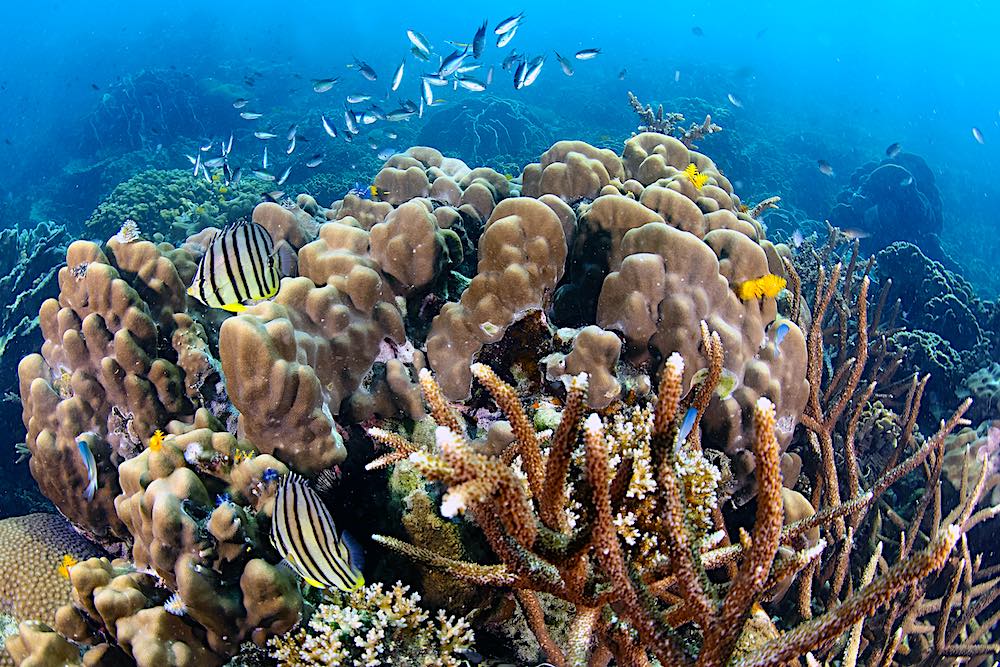
Important Techniques & Tips to Conduct a Fish Survey
· Swim slowly and steadily down the line, looking both far ahead and close around for different fish species
· Keep track of where fish swim so that you do not count them twice
· Estimate the number of fish in schools quickly but accurately.
· Do not count fish outside the survey area.
· Wait about 5 minutes after another diver has gone through the survey area before beginning to ensure that all the fish have not been scared off.
Substrate Survey
Substrate refers to the bottom composition, or the sea floor.
This includes both the non-living (abiotic) features and the living ones (biotic).
The abiotic components of the reef area includes the rocks, sand, and dead coral. While the biotic components includes the living corals, the algae, and sponges.
To conduct this survey, you will use the transect line as a guide to sample many points from the reef. We will then calculate an average that will tell us what the substrate consists of, and what percentage of the reef is living coral.
Abiotic & Biotic Reef Components
While the fish and invertebrate surveys are considered forms of Belt Transect Surveys, the substrate survey is called a Point Intercept Transect (PIT) survey.
This survey is the most difficult of the three, so your instructor will teach it as the third survey you conduct.
You will swim down the line, stopping to record the substrate every 50 centimeters; this means you will sample 40 points per section (2 every meter for 20 meters).
The actual sample point is small, no bigger than your finger nail and it is important this survey is conducted with precision, which requires practice with your Instructor.
The most important part of conducting the survey is ensuring that you look straight down on the line, 90 degrees to the tape.
To record the points we will use codes to make things easier and faster and our Instructor will teach you these codes.
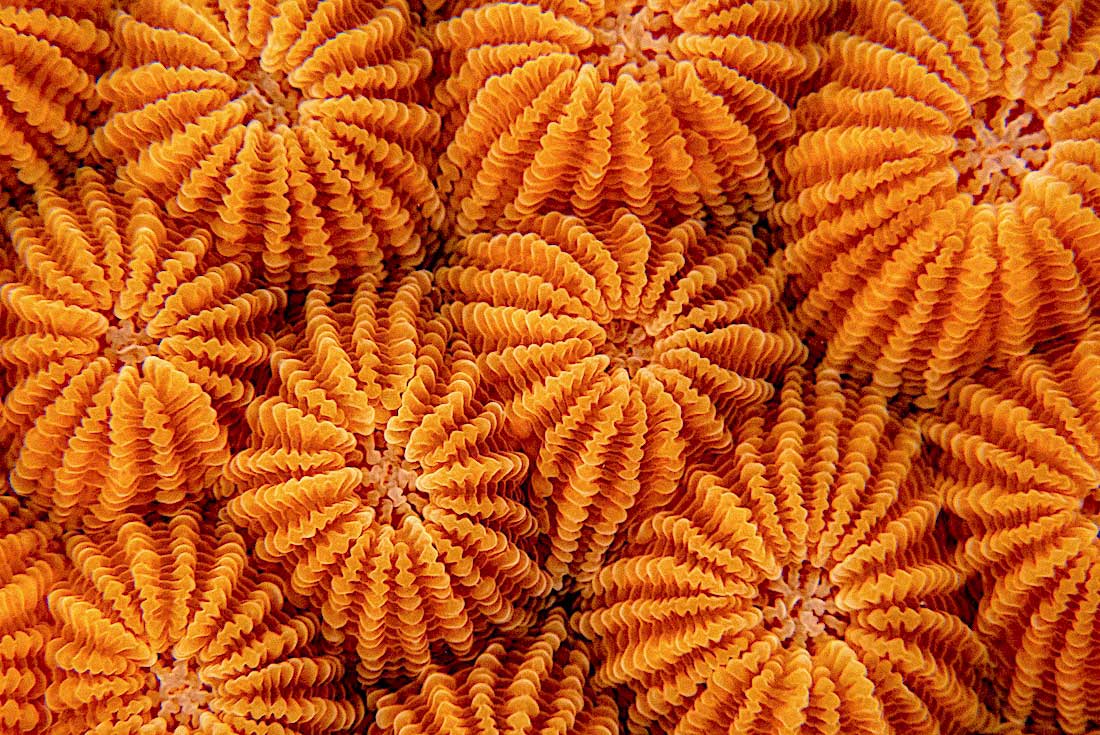
Important Tips to Conduct a Substrate Survey
· Orientate your body so you are facing into the current, with your head down and feet up
· Swim slowly, checking often to be sure you are recording the correct location on the tape and slate.
· Do not hold the slate in front of your face, but instead keep one eye on the slate, and one on the reef to maintain your buoyancy.
· Remember to skip 5 meters ahead at the end of every 20 meter section.
· Don’t get frustrated your first time, it gets much easier with practice, and for most experienced EMP surveyors this is their preferred survey to perform.
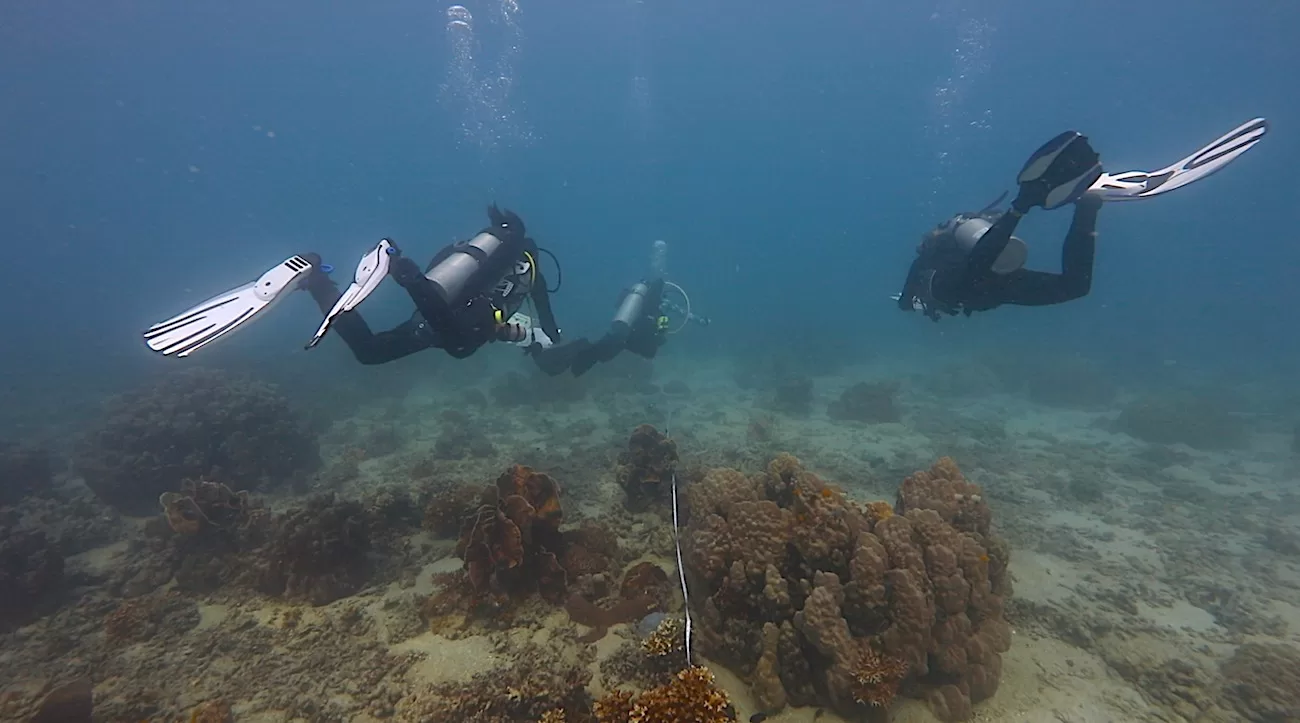
Estimating Visibility Using a Secchi Disk
The Secchi disk allows us to accurately estimate the visibility when used horizontally, or what is known as turbidity when used vertically.
This is essentially a measurement of how far light penetrates through the water, which is affected by many factors, including sedimentation, nutrient and phytoplankton concentration, and sun angle.
Estimating visibility using the Secchi disk is done by two divers, ideally at a depth of 5m.
Water Turbidity
The first diver stays at 0 m on the transect line (point A) or alternatively holds the disk and the end of the measuring tape.
The second diver swims away from the first diver, keeping an eye on the disk. When the diver can no longer see the disk, they record the distance from it (this is the max distance). Next, the diver slowly swims back in until they can see the disk again (min distance). The average the two distances gives horizontal visibility.
On days when the sea bed cannot be seen from the boat, vertical visibility can also be measured by attaching the transect line to the Secchi disk and lowering it into the water. Again, the maximum (when the disk can no longer be seen) and minimum (when the disk comes back into view) distances are taken as an average and recorded.
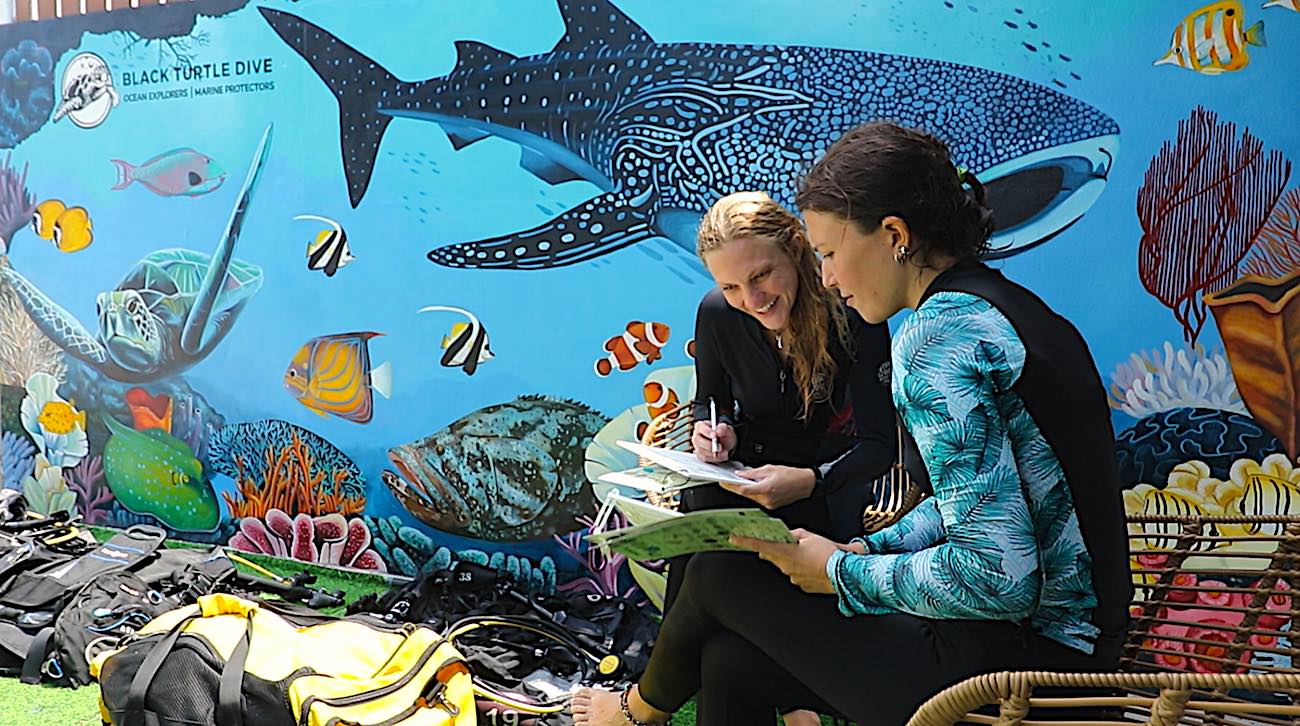
BOOK NOW 11,900 baht
Benefits of Learning the Ecological Monitoring Program
Our EMP marine conservation course is an intensive program that can transform the way you as a scuba diver think about and behave in the marine environment.
A typical course format includes classroom instruction, field work, and hands-on experience with underwater monitoring and surveying equipment.
Upon completion of the course, students will be equipped with the knowledge and skills necessary to pursue a career in marine conservation or to implement conservation strategies in their own communities.
EMP marine conservation course is a valuable training program for anyone interested in marine conservation and the protection of marine ecosystems.
By providing our students with a solid foundation in marine ecology and monitoring techniques, the course helps individuals contribute to the ongoing effort to protect our oceans and the life they support.
Come and join our EMP course, make a difference and become a marine conservationist for life.
Frequently Asked Questions
What is the Ecological Monitoring Program?
The Ecological Monitoring Program is designed to collect and analyze data on the health of the coral reef by assessing key biotic and abiotic reef components.
The program goal is to monitor and understand the health and status of coral reefs, identify potential threats or changes and inform decision making and management strategies in order to protect and preserve.
Some of the constants assessed include fish & invertebrate abundance, biodiversity, substrate coverage, coral taxonomy, coral bleaching, coral diseases, coral predation and macro algae coverage.
How much does the EMP course cost?
The Ecological Monitoring program (EMP) course costs 11,900 baht per person. Included within this price are The Ecological Monitoring program e-learning course materials, 4 training dives, all equipment rental (including dive computer) instructor fees, boat trips and dive insurance.
Food and accommodation are not included. We can assist with accommodation and can organize AC rooms close to our dive center.
How long does it take to complete the EMP course?
Our standard EMP course is scheduled over 4 days. The course includes 4 Instructor led classroom presentations, and 3 ‘practice’ in water surveys, and one ‘full’ EMP survey conducted at coral reefs around Koh Tao.
You will also need to read and complete chapter reviews for chapters 1-8 of the EMP course manual which is advised to be done prior to arrival via e-learning.
Like all our courses the EMP course is performance based. What this means is every student must master every performance requirement to meet certification requirements, which may result in the course running into a fifth day.
The course schedule is flexible and can be adapted to fit around specific individual needs. You can email us with any scheduling questions you may have and we will do our best to work the schedule around your itinerary.
Will I get a certification for the EMP course?
You will receive a Conservation Diver Ecological Monitoring Program diver e-card that states you have completed all required training to become an Ecological Monitoring Program diver
Our EMP Marine Conservation course is a prerequisite for many of our other courses and provides you with the knowledge required to become a confident scientific diver.
What is the minimum age for the EMP course?
To start the EMP course you need to be at least 12 years of age and a certified diver. At 12 years of age divers can take Junior Advanced Open Water course or be a Junior Adventure diver.
For all divers, our primary training focus is on development of good buoyancy skills and correct weighting to ensure in-water scientific activities have no impact on the marine environment.
Can I take E-learning for the EMP course before I arrive?
It is highly recommended to complete the EMP e-learning prior to starting the course. There are 8 chapters to complete, each with its own review that must be successfully completed before you can progress.
Completing the e-learning ahead of time enhances the learning experience both in the classroom when participating in the Instructor led presentations, and in the water when conducting the survey on the reef.
What are the prerequisites for taking the EMP course?
To start the EMP course you need to be at least 12 years old and either a
an Advanced diver under a leading diving organization (PADI, SSI, RAID, etc.) or an Open Water diver who has satisfactorily completed a buoyancy assessment with a Conservation Diver Instructor or completed a buoyancy specialty course with a leading certification organization.
All EMP student divers must demonstrate proper diving ability at an advanced Level and be proficient in buoyancy and self-awareness.
What will I learn on the EMP course?
The EMP course will teach you more about coral reef ecology, the threats facing the worlds coral reefs and how to assess coral health and bleaching.
You will learn the techniques and diagnostic features for identifying a variety of indicator species; either coral reef invertebrates or coral reef fish, and how to assess substrate type and coral coverage.
We will also teach you different survey techniques used by reef managers around the world to monitor the abundance of fish & invertebrates along a permanent transect line.
You will learn about substrate types, coral coverage and growth forms across coral reef ecosystems using the point-intercept technique.
You will also be shown how to input the data you collect into the Conservation Diver database.
